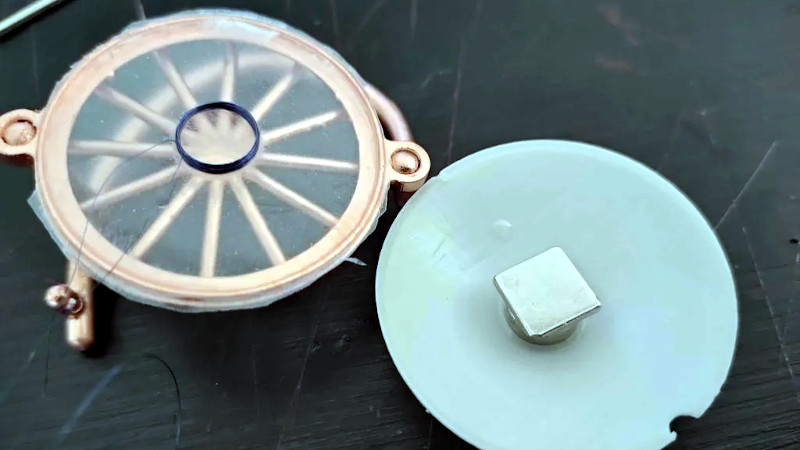There are a variety of ways to enjoy your audio, of which headphones are one. Making a set of headphones is a straightforward enough project, but [madaeon] has taken the art to a new level by building the headphone drivers from scratch rather than using an off-the-shelf pair.
The result is a set of moving coil drivers with a construction technique involving using the semi-opaque thin window from an envelope as a diaphragm and as a former for the coil. Cyanoacrylate adhesive holds everything in place. The diaphragm is suspended across the mouth of a cardboard tube with the coil positioned above a magnet, resulting in the minimum moving mass necessary for as good a sound reproduction as possible. Judge for yourself, there’s a video that we’ve placed below the break.
The drivers are placed in a set of 3D-printed on-ear holders, and while they probably won’t match an expensive set of commercial headphones, we’d hazard a guess that they won’t have too bad quality. At the very least, it’s an interesting design to base further experimentation on.
Surprisingly few home made speaker or headphone drivers have made it onto these pages, probably because of the ubiquity of the ready-made article. An exception is this flexible PCB speaker, and of course we’ve also talked about home made electrostatic speakers.
















Actually the only other speaker/headphone project I can remember seeing was in a 50s kids activity book, and it made one out of boot polish tins.
The quality of the speaker itself is probably not bad at all. Probably as good as any “skullcandy” out there – just needs a proper enclosure around it.
Reminds me of cat whiskers and crystals! It’s like Arts and Crafts, but with a technical function :)
Well done, enjoyed watching.
Where are coconut half shells?
Very nice build, the electroplating was an interesting touch. I have pondered building headphones before myself, but my aspersions lean more towards an over the ear design, with the cans spun out of wood, and some kind of liquid or gell filled war cushions. I had a pair of phones with cushions like that decades ago and I dearly miss them, and electrostatic drivers. The thing is yours exist in the physical world and mine only exist in my head, so you get major points for acting on your concept.
The “trick” to getting low distortion from a magnetic motor type of speaker/earphone is arranging the magnetic field and the voice coil so the force due to the current is linear over the excursion range of the diaphragm, and the mechanical restoring force on the diaphragm is a linear function of displacement — more displacement, more restoring force. One way involves a long coil and a short magnetic gap, and another is the opposite — short voice coil, long magnetic gap. Either way can produce a constant force regardless of displacement.
It is very easy to make audible “sound”–even a thin metal sheet with the driver current passed through it (with suitable impedance transformation” can do this. A few years ago, some university posted a video where the grad students had made a speaker out of carbon flakes (nanotubes or graphene, I can’t recall) deposited on paper and suspended in air…that played music. However, the distortion of these approaches is high (>3% THD) and would horrify any person actually interested in the quality of the sound. Same goes for inaccurately set up and poorly designed magnetic drivers like this one. Yes, it makes sound but for the sound quality you’re undoubtedly better off getting a modest $20-ish pair of earbuds.